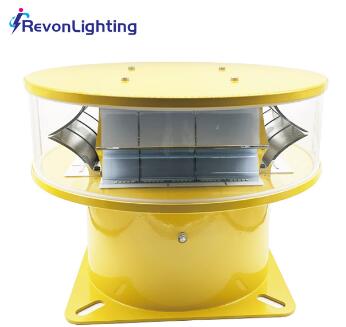The obstruction lighting system is an integral part of aviation safety, designed to enhance visibility and alert pilots to potential obstacles in their flight path. These systems utilize a combination of lights and markers to ensure that structures and other potential hazards are clearly visible, particularly during low-visibility conditions. In this article, we will explore the importance of obstruction lighting systems, their components, and their role in enhancing aviation safety.
Importance of Obstruction Lighting Systems
Obstruction lighting systems play a vital role in aviation safety as they provide enhanced visibility and help pilots identify potential hazards. These systems are primarily used to signal tall structures such as communication towers, wind turbines, bridges, and buildings, ensuring safe navigation. By providing a visual cue, obstruction lighting systems help prevent collisions and safeguard both aircraft and individuals on the ground.

Components of Obstruction Lighting Systems
Red Obstruction Lights: Red obstruction lights are typically used on structures taller than a certain height specified by aviation regulations. These lights emit a steady or pulsating red light, ensuring continuous visibility during daytime and nighttime conditions.
White Strobe Lights: White strobe lights are high-intensity lights that emit short-duration flashes. These lights are often used on structures near airports, heliports, or areas with heavy air traffic. The intense flashes of white light make structures highly visible even in poor weather conditions.
Dual Lighting Systems: Some obstruction lighting systems combine red obstruction lights with white strobe lights. This dual lighting system provides enhanced visibility and is commonly used on tall structures located in busy airspace or areas with high air traffic. The combination of red and white lights ensures maximum recognition and visibility.
| 1 | 3 |
| 2 | 4 |
| 3 | 5 |
Regulations and Standards
Obstruction lighting systems are regulated by various national and international aviation authorities to maintain uniform standards and enhance aviation safety. For instance, the International Civil Aviation Organization (ICAO) sets guidelines for the marking and lighting of structures. These guidelines specify the type, intensity, and placement of lights based on the height and location of the structure. It is essential for stakeholders to comply with these regulations to ensure consistent and effective obstruction lighting practices.
Maintenance and Inspections
Regular maintenance and periodic inspections are crucial for the proper functioning of obstruction lighting systems. It is important to ensure that the lights are functioning correctly, emitting the appropriate level of brightness, and aligned properly. Regular maintenance not only ensures the visibility of the lights but also helps prevent false alarms or malfunctions that could lead to confusion for pilots.
Conclusion
Obstruction lighting systems are essential for aviation safety, providing enhanced visibility and alerting pilots to potential obstacles. These systems, consisting of red obstruction lights, white strobe lights, and dual lighting systems, ensure continuous visibility and safe navigation around tall structures. Compliance with regulations and regular maintenance are crucial to maintaining the effectiveness of these systems and ensuring aviation safety. As aviation continues to evolve, obstruction lighting systems will remain a critical component in preventing accidents and safeguarding both aircraft and individuals on the ground.